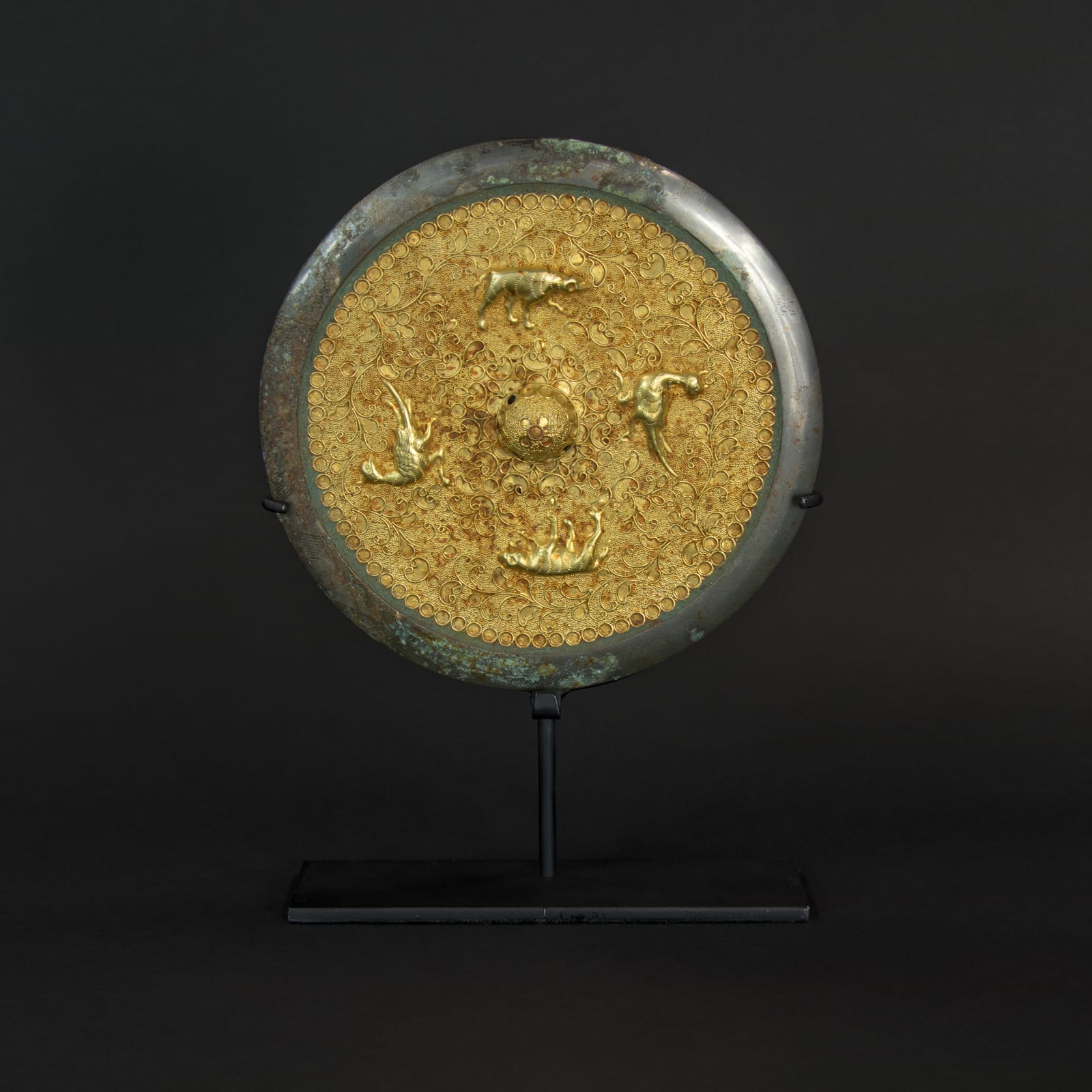Tang Bronze Mirror with Gold Applique, 7th Century CE - 9th Century CE
Bronze, Gold
width 19 cm
width 7 1/2 in
width 7 1/2 in
ES.6632
A beautiful Tang dynasty bronze mirror with central gold applique. The applique shows vegetal patterns, with four animals around a central disc. This is an object of great beauty, which...
A beautiful Tang dynasty bronze mirror with central gold applique. The applique shows vegetal patterns, with four animals around a central disc. This is an object of great beauty, which showcases the technological and artistic prowess of Tang Dynasty crafstmen. The gold applique is realised with outstanding care with minute filaments of gold, with the filigree and granulation technique. Giving this artefact a character of extraordinary beauty and refinement.
Interesting comparables are exhibited at:
Victoria and Albert Museum, London (accession number: M.505-1936)
Penn Museum (accession number: 29-25-3A).
Today, when we think of mirrors, we think of a thin layer of reflective metal, usually a combination of tin and mercury, covered in a layer of protective glass. However, the modern mirror was an innovation of 16th Century Italian craftsmen. Before that, since ancient time, mirrors of highly polished bronze were used. Bronze mirrors themselves were introduced into China during the 6th Century B.C. They were used not only as functional articles but as sacred objects filled with their own powers. The custom of placing mirrors in a tomb originated around the 4th Century B.C. The Chinese believed that mirrors had the ability not only to reflect, but also to radiate light, and thus illuminate the tomb for eternity. Often multiple mirrors were entombed, not alongside the other funerary objects, but close to the body of the deceased.
Interesting comparables are exhibited at:
Victoria and Albert Museum, London (accession number: M.505-1936)
Penn Museum (accession number: 29-25-3A).
Today, when we think of mirrors, we think of a thin layer of reflective metal, usually a combination of tin and mercury, covered in a layer of protective glass. However, the modern mirror was an innovation of 16th Century Italian craftsmen. Before that, since ancient time, mirrors of highly polished bronze were used. Bronze mirrors themselves were introduced into China during the 6th Century B.C. They were used not only as functional articles but as sacred objects filled with their own powers. The custom of placing mirrors in a tomb originated around the 4th Century B.C. The Chinese believed that mirrors had the ability not only to reflect, but also to radiate light, and thus illuminate the tomb for eternity. Often multiple mirrors were entombed, not alongside the other funerary objects, but close to the body of the deceased.
